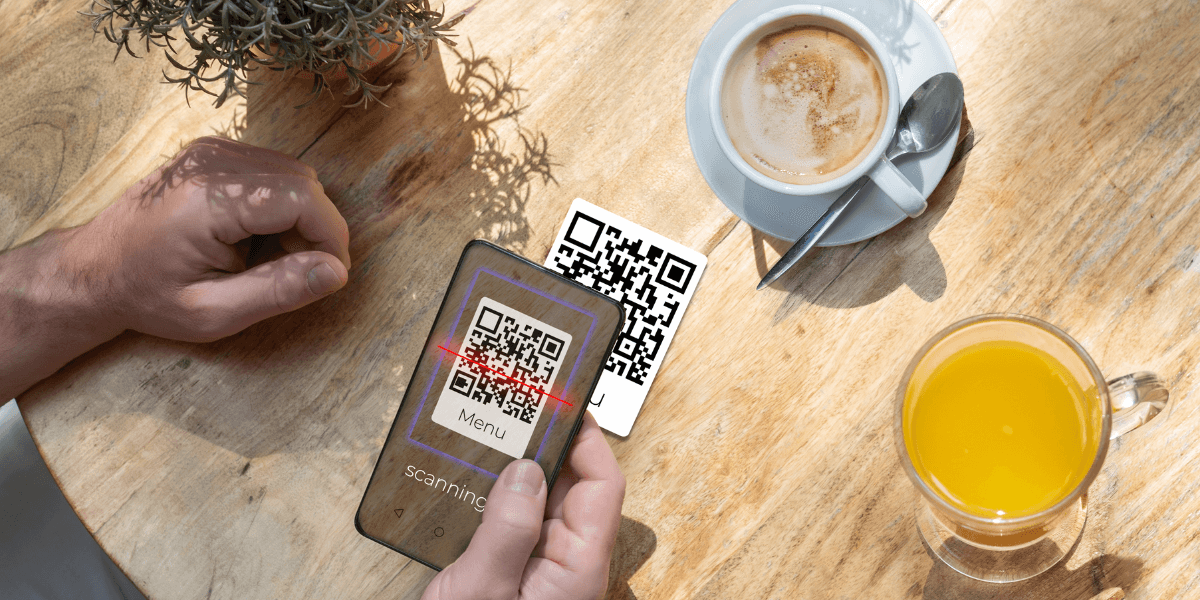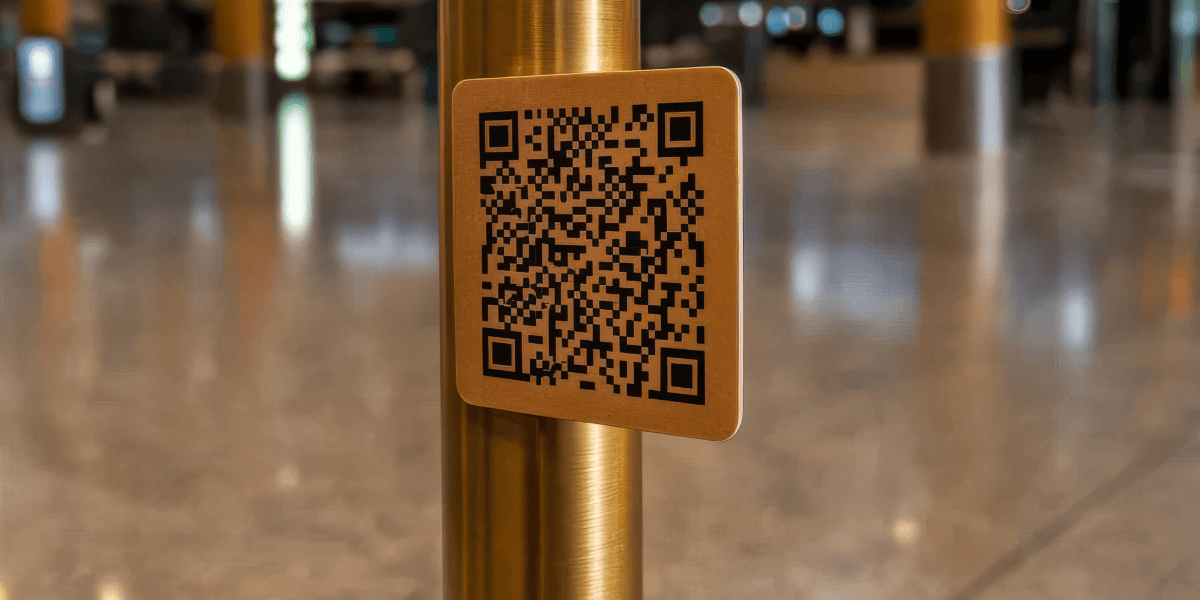Lower your internet bill
61% of people overpay for their internet.
Are you one of them?
Unlock exclusive offers in your area!
Call now
[tel]Enter zip code
1 Star is Poor & 5 Stars is Excellent.
* Required

Written by Caroline Lefelhoc - Pub. Feb 12, 2025 / Updated Feb 10, 2025
Table of Contents
Are you happy with your Internet service?

About the author
In the time it takes to scan a QR code at a parking meter, a restaurant table, or a store display, cybercriminals can gain access to your bank account, credit card information, and personal data. These seemingly innocent black-and-white squares have become the latest frontier in digital fraud, with thousands of people falling victim to sophisticated QR code scams.
The convenience that made QR codes indispensable during the 2020 COVID-19 pandemic has created a perfect opportunity for scammers. Every day, unsuspecting people scan fraudulent codes in public spaces, losing hundreds to thousands of dollars in moments. The Better Business Bureau reports a surge in QR code-related crimes, with new schemes emerging faster than many security systems can detect them [1].
But abandoning QR codes isn’t the answer. These digital tools have become integral to shopping, dining, and conducting business. The real solution lies in understanding how these scams work and learning to spot the warning signs before criminals can strike.
QR codes became popular during the COVID-19 pandemic when businesses needed contactless ways to share information [2]. From restaurant menus to parking payments, these pixelated squares now touch nearly every aspect of our daily lives. Unfortunately, their widespread adoption has created a perfect opportunity for fraudsters.
Think of QR codes as digital doorways. While most lead to legitimate destinations, some open into carefully crafted traps. Unlike traditional web links, where you can see the URL before clicking, QR codes mask their destination until scanned. This inherent mystery makes them particularly effective tools for scammers.
Criminals have developed several clever tactics to exploit QR codes. One of the most common schemes involves placing fraudulent codes over legitimate ones, especially in public spaces. In Austin, Texas, scammers covered parking meter QR codes with their versions, redirecting unsuspecting victims to fake payment sites that stole their credit card information [3].
These fraudsters don’t just stick to physical locations. They’ve adapted their tactics to the digital world, sending QR codes through text messages and emails. They often create urgent scenarios, claiming you need to:
Once scanned, these malicious codes can lead to various harmful outcomes:

Spot real-world scams
Let’s look at some recent scams that have emerged:
Victims receive mysterious packages containing a QR code and the enticing message, “Scan this code to see your gift!" Once scanned, the codes give scammers access to the victim’s device and stored information [4].
Criminals place counterfeit QR code stickers over legitimate parking payment codes. When people scan these codes to pay for parking, they unknowingly hand over their payment details to scammers.
Fraudsters place their own QR codes on restaurant tables, mimicking legitimate menu codes. When customers scan these codes to view the menu, they’re directed to fake ordering systems designed to steal their payment information [5].
While spotting fake QR codes can be challenging, several warning signs should raise red flags:
Look for any evidence of tampering, such as:
Before following a QR code’s link, watch for:

Protect yourself before and after scanning
Protecting yourself from QR code scams doesn’t mean avoiding them altogether. Instead, follow these security practices:
Take these precautions before scanning any QR code:
Once you’ve scanned a code:
When making payments through QR codes:
If you suspect you’ve fallen victim to a QR code scam, take immediate action:
As QR codes integrate into our daily lives, security measures and scammer tactics will evolve. Businesses are developing more secure QR code systems, including digital signatures and encryption. However, the most effective protection remains user awareness and caution.
The cybersecurity industry isn’t standing still in the face of QR code threats. New technologies are emerging to make QR codes more secure. Digital watermarking allows users to verify a code’s authenticity before scanning. Some companies are developing dynamic QR codes that change periodically, making them harder to replicate. Mobile device manufacturers are enhancing their built-in QR scanners with better security features that can detect and warn users about potentially malicious codes.
AI and machine learning are becoming powerful tools in the fight against QR code fraud. These technologies can analyze patterns in QR code usage and flag suspicious behavior in real time. For example, AI systems can detect when multiple devices simultaneously scan the same code from different locations, suggesting a copied or fraudulent code. They can also identify unusual patterns in the websites that QR codes link to, helping to spot potential scams before users fall victim to them.
Companies must now consider QR code security as part of their cybersecurity strategy. This includes:
As QR code payments become more common, especially in retail and restaurant settings, the security implications grow more serious. Mobile payment systems that use QR codes must balance convenience with robust security measures. Many companies are now implementing additional verification steps, such as requiring biometric confirmation or a PIN, even after scanning a QR code payment link.

When in doubt, skip the scan.
QR codes offer undeniable convenience, but that convenience shouldn’t come at the cost of your security. By understanding the risks and following proper safety protocols, you can enjoy QR code benefits while protecting yourself from scammers.
Remember: when in doubt, skip the scan. You can find alternative ways to access the same information by manually typing in a web address or asking staff for a physical menu. Your security is worth the extra few seconds it takes to be careful.
Stay informed about the latest scams, trust your instincts when something seems suspicious, and share this knowledge with friends and family. Together, we can make it harder for scammers to succeed in their deceptive schemes.
While knowing how to avoid QR code scams is crucial, overall online security starts with having a reliable and secure internet connection. Many internet service providers now offer advanced security features, such as built-in malware protection, secure DNS, and real-time threat monitoring, that can help protect you from various online threats, including malicious QR codes.
Ready to strengthen your digital security? Enter your zip code here to discover top-rated internet providers in your area that offer advanced security features. Compare plans, prices, and security offerings to find the perfect fit for your needs.
[1] BBB.org. “BBB Scam Alert: Fraudulent QR codes continue to be used in a variety of scams."
[2] Forbes.com. “How The Pandemic Saved The QR Code From Extinction"
[3] CNB.com. “What You Need to Know About QR Code Fraud"

About the author
Congratulations, you qualify for deals on internet plans.
Speak with our specialists to access all local discounts and limited time offers in your area.
[tel]61% of people overpay for their internet.
Are you one of them?
Unlock exclusive offers in your area!
Call now
[tel]Enter zip code